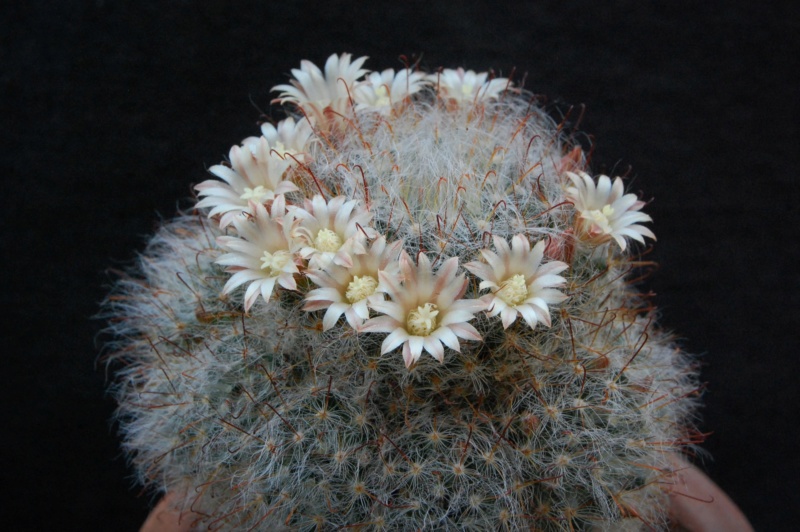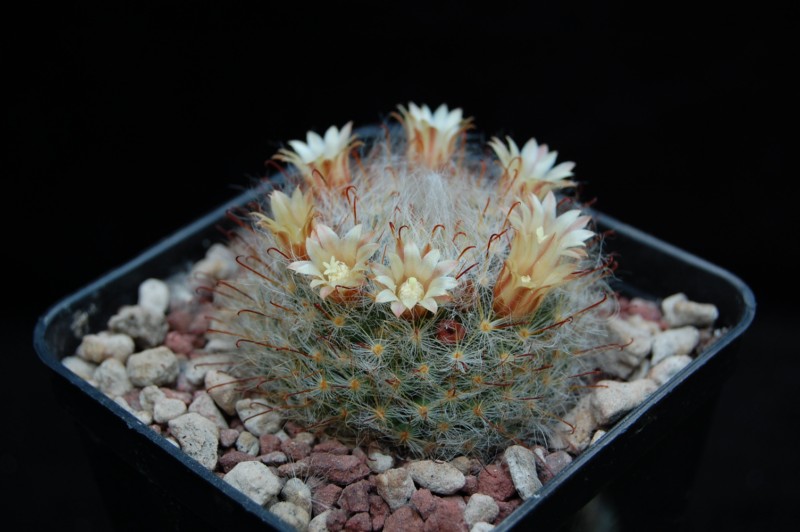Neomammillaria longicoma B. & R., The Cactaceae 4: 146, figs. 162, 165. 1923.
'Cespitose, often forming broad clumps; individual specimens 3 to 5 cm. in diameter; tubercles conic, 4-5mm. long, dark green, obtuse, bearing long white hairs in their axils;
Radial spines 25 or more, weak and hairlike, more, or less interlocking;
Central spines 4, 10 to 12mm. long, brown above a little paler below; 1 or 2 hooked;
Flowers from axils of upper tubercles; outer perianth segments pinkish, darker along the center;
Inner perianth-segments lanceolate, acute, nearly white or sometimes tinged with rose;
Stamens and style much shorter than the inner perianthsegments;
Stigma-lobes 3, cream colour.
MEXICO: 'Common about San Luis Potosi' collected by Dr. E. Palmer in 1905 (US 1821099, type!) and by Mrs. I Vera in 1912.
This species was differentiated by the authors from M.bocasana by the number of central spines. The seed colour is stated by Craig to be
black, but this is not in the original. Plants cultivated as M.bocasana can have 1-5 centrals with 1 or 2 hooked (J. Mamm. Soc. 5: 61. 1965) and have brown seeds. Buchenau (J. Mamm. Soc. 5: 74-5) reported 2-6 centrals in plants at the (presumed) type locality. Consequently the character employed by Britton and Rose seems likely to be valueless. In the absence of evidence to the contrary, I regard M.longicoma as a synonym of M.bocasana.
Glass & Foster (Cact. Succ. J. Amer, 42: 175, fig. 37. 1970) illustrate M.bocasana in habitat 'in the mountains about 12 miles northwest
of San Luis Potosi', remarking that the plant is undoubtedly Britton & Rose's M.longicoma and it is certainly what has been in the trade as
M.bocasana. It grows in a fairly barren rocky area, in orangey-pink decomposing granite.
From "The Journal of the Mammillaria Society" Vol. XII n.2 April 1972
Mammillaria longicoma








